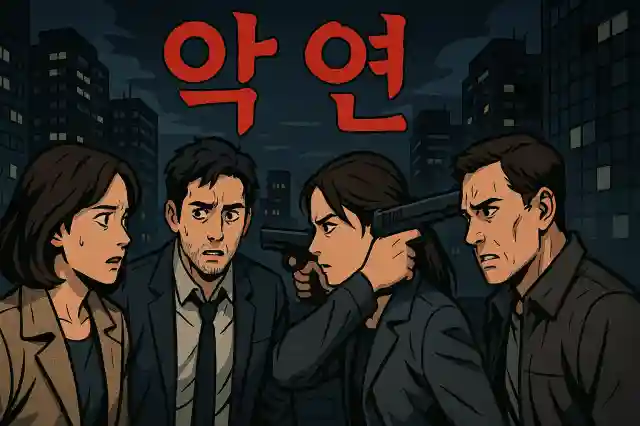Unraveling the Complex Web of ‘Karma’: A Deep Dive into the Hit Korean Crime Thriller
Have you ever found yourself entangled in the intricate web of fate, where the consequences of your actions seem to haunt you? “Karma,” the latest South Korean crime thriller series, delves into this very concept, weaving a narrative that not only captivates but also provokes thought. Released on Netflix in April 2025, “Karma” quickly rose to prominence, claiming a spot among the top non-English TV shows globally.
Exploring the Themes and Impact of ‘Karma’
“Karma” is more than just a crime thriller; it’s a reflection of our collective fascination with the concept of karma and the butterfly effect. The series, based on a Kakao webtoon by Choi Hee-seon, follows six characters whose lives are intertwined by a mysterious accident, leading to a climax of justice and retribution.
Key Implications
- Complex Characters: The series features a talented ensemble cast, including Park Hae-soo, Shin Min-a, and Lee Hee-joon, bringing to life complex, morally conflicted characters.
- Non-Linear Narrative: “Karma” employs a non-linear narrative style, complemented by innovative cinematography such as split-screen techniques, enhancing suspense and emotional depth.
- Cultural Impact: The series contributes significantly to the cultural influence of Korean dramas, showcasing darker themes and moral dilemmas that resonate with viewers worldwide.
Table of Contents
– Introduction
– Exploring Themes and Style
– Insights from the Cast and Crew
– Conclusion
Introduction
“Karma” delves into the concept of fate and retribution, exploring how six characters are bound together by a series of events. The series premiered on Netflix on April 4, 2025, and has received positive reviews for its character-driven story and suspenseful plot.
Exploring Themes and Style
At its core, “Karma” is deeply rooted in the ancient concept of karma, suggesting that every action has consequences. This theme is expertly woven throughout the series, as each character’s past decisions come back to haunt them in unexpected ways.
The Concept of Karma and Fate
“Karma” explores the idea that our actions are not isolated but are part of a larger web of consequences. The series uses a non-linear narrative to highlight how each character’s life is intertwined with others, often in ways they cannot control.
Cinematic Style and Storytelling
The use of a non-linear timeline and split-screen techniques in “Karma” is a deliberate choice to keep the audience engaged and guessing. These cinematic elements heighten the suspenseful nature of the storytelling while exploring the characters’ emotional journeys in depth.
Insights from the Cast and Crew
The cast of “Karma” brings together some of the most talented actors in the Korean entertainment industry. Park Hae-soo, known for his roles in “Squid Game,” adds depth to the series with his portrayal of a character struggling with the consequences of his past. Shin Min-a, with her nuanced performance, brings emotional depth to her role, while Lee Hee-joon‘s character embodies the moral dilemmas faced by many in the series.
The director, Lee Il-hyung, known for his work on “A Violent Prosecutor” and “Remember,” brings a unique vision to “Karma.” His approach to storytelling emphasizes the interconnectivity of the characters’ lives, creating a sense of urgency and suspense that keeps viewers engaged.
Conclusion
“Karma” is more than just a crime thriller; it’s an exploration of human nature, delving into themes of fate, morality, and the consequences of our actions. As you watch the series, you might find yourself pondering: Can we truly escape the karma of our past, or are we forever bound to the web of consequences we weave?
For more insights into South Korean dramas and their impact on global television trends, consider exploring our related blog post on The Influence of K-Dramas on Global Television Trends.
Additional resources for exploring “Karma” and similar series include:



